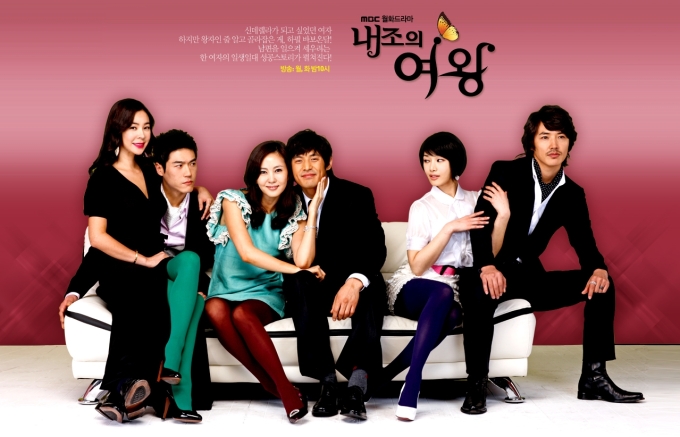 ( Source: Unknown )
( Source: Unknown )
Confused about all the new buzzwords used to describe Koreans’ bodies these days? Here’s my translation of an article that gives a quick guide.
The author implies that most of them arose organically from the public’s interest in certain actors in Korean dramas, but of course it’s largely companies and the media that are constantly trying to create new consumer trends (read: new reasons for people to feel dissatisfied with themselves). Yet while most of these have no basis in reality, are essentially useless, and/or are so contrived as to be quickly forgotten or ignored, some do stick.
Of those that do though, if they have some English in them then it often makes them more interesting from a sociological standpoint. For whether by accident, mistranslation or design, they both reflect the way the term is already usually misused in Korean and further influence they way in which related English-language popular culture gets filtered into its Korean counterpart.
A good example from this article would be chongsoon-glaemor (청순글래머), or “Innocent Glamor,” which at first glance doesn’t seem all that strange: in her television commercials for instance, the ice-skater Kim Yuna (김연아) below manages to project an innocent image while having a seemingly glamorous lifestyle (I wonder if she’ll find the former stifling as she grows older however, like actress Moon Geun-young?). But it emerges that “sexy” would be a much better translation of the English word “glamor(ous),” and although I’m sure readers are well aware of the number of ways in which women are presented as pure and innocent but somehow also lustful in Western popular culture, and effectively are in Korean, there are still problems with assuming that that is what the term means, as the word “sexy” isn’t construed quite the same way here. Instead, we seem to be left with an obscure term for Korean women that look more virginal than normal(?), but yet still do the mechanical “sexy dances” virtually required of them on Korean talk shows.
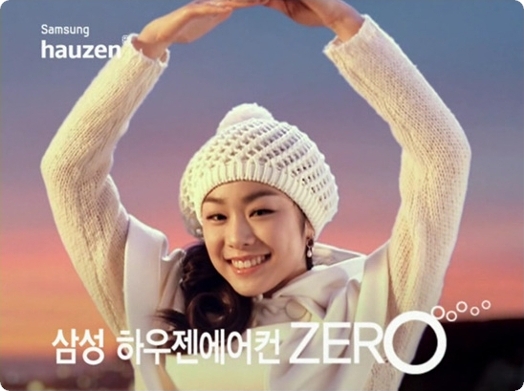 Anybody with more familiarity with the term and/or the actress Shin Se-kyung that supposedly spawned it, please feel free to correct me on my interpretation: after all, this is the first time I’ve looked at its origins, and just based on one article at that. But with the proviso that the next means I may be cherry-picking the facts to suit my own views, it does still seem very consistent with the Korean media’s overall trend towards discouraging or outright banning of assertive displays of women’s sexuality, i.e. genuinely sexy behavior.
Anybody with more familiarity with the term and/or the actress Shin Se-kyung that supposedly spawned it, please feel free to correct me on my interpretation: after all, this is the first time I’ve looked at its origins, and just based on one article at that. But with the proviso that the next means I may be cherry-picking the facts to suit my own views, it does still seem very consistent with the Korean media’s overall trend towards discouraging or outright banning of assertive displays of women’s sexuality, i.e. genuinely sexy behavior.
꿀벅지·미중년·꽃남…2009년 연예계 뷰티 트렌드는? 2009-12-31 by 두정아
올해 연예계 트렌드를 이끈 핫 키워드는 무엇일까. 꽃남과 미중년, 꿀벅지, 베이비페이스, 청순글래머 등 어느 해보다 개성있고 다양한 트렌드가 공존했던 한 해였다.
드라마 ‘꽃보다 남자’로 ‘꽃남’이라는 단어가 사람들 입에 오르내렸고, ‘내조의 여왕’의 윤상현은 ‘미중년’이라는 찬사를 받으며 남성들의 뷰티 열풍을 이끌었으며 그룹 에프터스쿨 멤버 유이의 매끈한 허벅지를 일컫는 ‘꿀벅지’와 배우 신세경의 ‘청순글래머’ 등은 여심을 자극하며 바디 열풍을 일으켰다. 여전한 ‘V라인’ 강세 속에 동안(童顔) 열풍 또한 이어져 ‘베이비페이스’라는 단어가 자주 회자됐다.
What were the hot keywords that led trends in the world of entertainment in 2009?
With kkotnam (Flower Man) and mijoongnam (Beautiful Middle-aged Man), ggoolbokji (Honey Thighs), babyface and chongsoon-glaemor (Innocent Glamor) emerging, there were many very distinct trends compared to most years.
From the drama Boys Over Flowers the term “Flower Man” was on everyone’s lips; from Queen of Housewives the actor Yoon Sang-hyu received a lot of praise for his looks, spawning the word “Beautiful Middle-aged Man” and a strong following among men wanting to emulate him ; and women were similarly interested in the After School member UEE’s smooth and velvety thighs known as “Honey Thighs” and actress Shin Se-kyung’s “Innocent Glamor.” Finally, in addition to the eternal “V-line,” a strong interest in youthful faces has been shown by the new word “Babyface” that is often talked about.
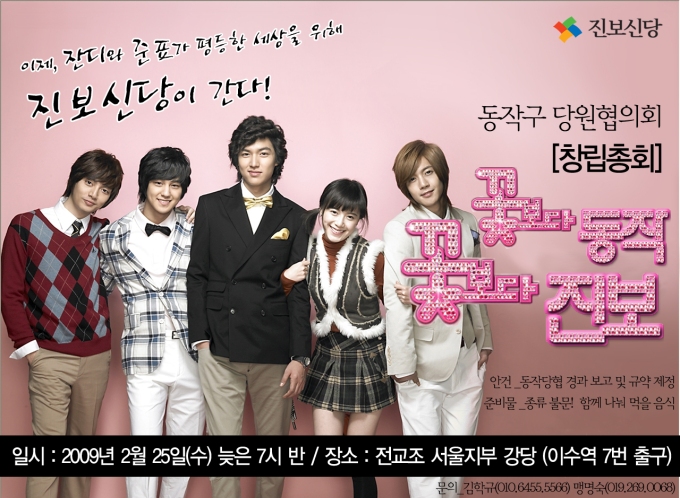 ( Source: Unknown )
( Source: Unknown )
‘꽃남’·’미중년’, 남성 뷰티(美) 열풍
KBS 드라마 ‘꽃보다 남자’ 신드롬에 힘입어, MBC 드라마 ‘내조의 여왕’ 태봉이 (윤상현 분)가 일으킨 ‘미중년’ 열풍까지 남성들의 뷰티 열풍이 어느 해보다 뜨거웠다. 이를 계기로 남자도 외모 관리를 해야 한다는 인식이 공유되기도 했다.
거친 남성다움보다는 부드럽고 세련된 귀족적인 이미지를 선호하는 분위기로 바뀌며 성형외과나 피부과를 적극적으로 찾는 남성들도 크게 증가했다.
경제 성장을 이루던 90년대에 사회생활을 시작한 현재 30대 후반부터 40대 초반의 중년들은 전통적인 부모 세대와 달리 중년이 돼서도 문화와 여가를 즐기고 자신을 가꾸는 노력에 적극적이기 때문이라는 해석이다.
Combined, the flower man syndrome caused by the KBS Drama Boys Over Flowers and the beautiful middle-aged man craze caused by the character Tae Bong-ee in Queen of Housewives have led to men taking a great interest in their bodies. This is how the notion that men, like women, also have to take care of their bodies and appearance has become accepted wisdom.
In turn, as the preferred image of Korean masculinity has become softer and more polished, refined and noble, cosmetic surgery and skincare clinics are reporting a great upsurge in interest from men.
One additional reason for this is that even though men that grew up and entered the workforce in the 1990s are now in their late-30s and early-40s, they are very different to their parents’ generation, and choose to enjoy culture and their free time more, which includes taking a greater interest in themselves.
올 한해 주목할 트렌드는 바디 열풍이다. 소녀시대의 지(GEE) 열풍과 함께 유행한 일명 ‘소·시·지(Gee)룩’. 몸매가 고스란히 드러나는 초절정 스키니진에 타이트한 티셔츠를 입은 여성들이 패션을 주도하면서 여성들의 S라인 욕구는 상승했다.
뒤이어 그룹 애프터스쿨 유이의 건강미 넘치는 탄탄한 허벅지가 주목을 받으면서 꿀이 발린 듯한 매력적인 허벅지라는 뜻의 ‘꿀벅지’라는 신조어까지 탄생했다.
또한 요즘 주가를 올리고 있는 단어는 ‘청순글래머’. MBC 시트콤 ‘지붕 뚫고 하이킥’ 출연하고 있는 신세경은 청순한 매력과 섹시한 관능미를 동시에 지니고 있어 ‘청순 글래머’의 대명사로 불린다. ‘포스트 김혜수’로 주목받으며 휴대전화, 화장품 광고 모델 자리를 꿰차는 등 그 인기를 입증하고 있다.
이에 대해 그랜드성형외과 유상욱 원장은 “과거 여자 톱스타들의 상징이 ‘화장품 모델’이었다면 2009년은 이효리, 신민아, 송혜교, 손담비 등 청바지 모델로 그 중심이 바뀌었다”며 “이 같은 변화는 요즘 대중들의 관심이 바디로 옮겨지고 있다는 증거”라고 설명했다.
2009 was a real year of body trends. First, there was the very popular so called “Sausage Look” of Girls’ Generation. Hiding nothing, the ensuing fashion of wearing extremely skinny jeans and tight t-shirts among women has sparked an intense interest by women in their S-lines.
Next, as a lot of interest in After School member UEE’s firm, smooth and very healthy-looking thighs emerged, the new word “Honey Thighs” was coined to describe thighs like them.
Another word that’s stock is rising is “Innocent Glamor.” This comes from the actress Shin Se-kyung that appeared in the MBC sitcom High Kick Through The Roof, described as the icon for women who combine a pure and innocent image with sex appeal. Considered a second Kim Hye-su also, because of her popularity she regularly appears in cellphone and cosmetics commercials.
According to “Grand Cosmetic Surgery Clinic” owner Yu Sang-ok, “in the past the symbol of top female stars was the cosmetic model, but in 2009 women like Lee Hyori, Shin Min-ah, Song Hye-gyo and Son Dam-bi have been mostly modeling jeans instead,” and “this is proof that the focus of people’s attention has moved to star’s bodies now.”
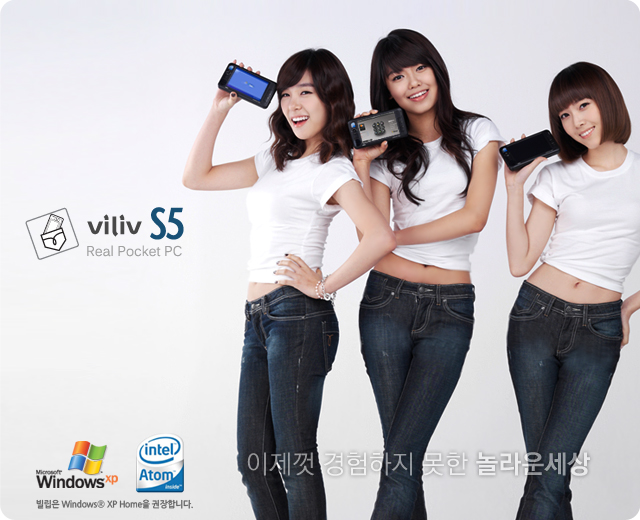 ( Source: Naver )
( Source: Naver )
‘V라인’ 강세, ‘베이비페이스’가 위협
올해도 ‘V라인’ 강세는 여전했다. 뭐니뭐니해도 ‘동안’, ‘V라인’, ‘작은 얼굴’은 사람들이 가장 선호하는 이미지이기 때문이다. 갸름하고 부드러운 V라인은 첫인상부터 편안하고 친근한 장점도 있다.
MBC 드라마 ‘선덕여왕’ 미실 역의 고현정은 소름끼치는 연기와 더불어 나이를 가늠할 수 없는 ‘베이비페이스’로 주목을 받았다. 투명한 피부는 물론, 볼륨감이 그대로 살아있는 생기있는 얼굴은 아기 피부 같다는 찬사를 받았다.
‘베이비페이스’는 ‘어려보이면서 입체적인 얼굴’을 말한다. 그 특징은 얼굴 옆이 아닌 앞쪽으로 볼륨감이 살아있는 얼굴로 콧등의 높이와 균형을 이루는 부드러운 곡선 모양의 탐스러운 이마 그리고 갸름하고 조금은 짧은 듯한 턱 선이 생명이다. 이러한 ‘베이비 페이스’의 열풍은 2010년에도 지속될 것으로 전망된다.
Last year, the emphasis on the V-line remained unchanged. After all, the preferred image is to have a dongan “Youthful face [for one's age],” V-line, or jakkun-olgool “small face.” And if you have a long, slender face with a V-line, people’s first impression of you will be softer and friendlier.
Hence the interest in the “Babyface” of actress Ko Hyeon-jeong, who played the character Lady Mishil in the MBC drama Queen Seon Duk, and whose acting was so good that she gave viewers goose pimples. With clear skin and glowing, firm cheeks, she has received a lot of praise for having a face as good as a baby’s.
But a babyface has been described as a “solid, 3D face.” In particular, it’s not just the volume of the cheeks on the side but also the balance with the bridge of the nose, the softness of the curves and the desirability of the forehead that make it look youthful. They look set to remain popular in 2010. (end)
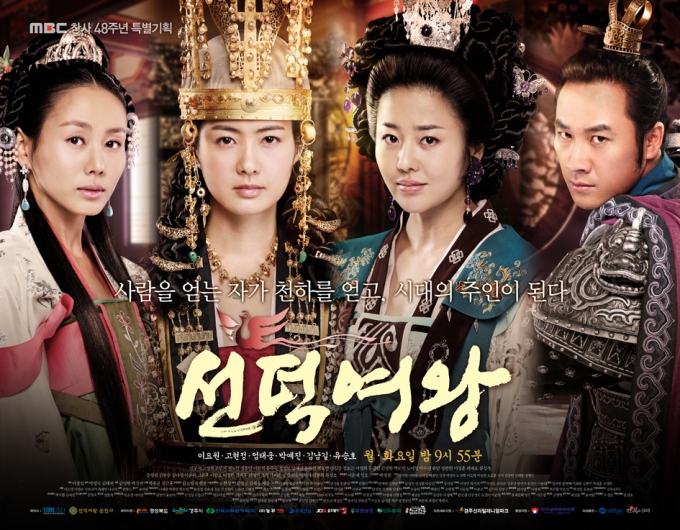 ( Source: Naver )
( Source: Naver )
Like I said in an earlier post, I was embarrassed at not realizing how sexist the term Honey Thighs was when I first heard the term, but I doubt I would have if they’d been described like that instead. And continuing with the theme of sexual discrimination, I was surprised not to see “Chocolate Abs” for men also; unlike the commercial that spawned it, perhaps the term itself is more 2010 vintage?
Regardless, please let me know if you can think of any others, and especially if you have alternative explanations for where any of the above ones came from!
Filed under: Korean Media, Korean Men's Body Images, Korean Sexism, Korean Sexuality, Korean Women's Body Images Tagged: After School, Babyface, 내조의 여왕, 미중년, 베이비페이스, 고현정, 김연아, 꽃남, 꿀벅지, Girls' Generation, Honey Thighs, Innocent Glamor, 선덕여왕, 소녀시대, 유이, 청순글래머, Kim Yuna, Ko Hyeon-jeong, Pure Glamor, Queen of Housewives, Queen Seon Duk, Shin Se-kyung, UEE



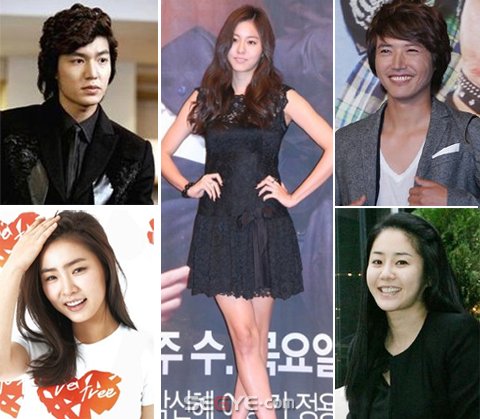

Recent comments